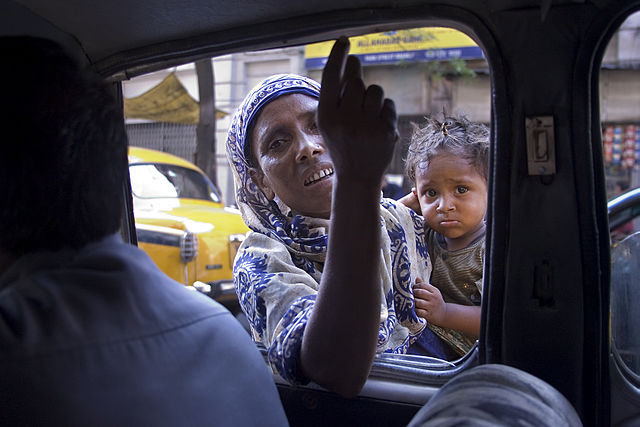
Let’s be honest: How many times have you chosen to not go out in public on a weekend in your own hometown because the energy is just too much?
I know I was guilty of it often when I was still living in Long Beach, California and working full-time Monday through Friday.
I would consider going to this event or that, and then choose, instead, to stay cozy in the comfortable solace of my apartment because the thought of all that energy was just too much for me after yet another long week at work surrounded by the intense energies that thrive in any workplace. Are you nodding your head in agreement yet?
If so, then you totally understand what I mean when I say that, as an empath, it can be very challenging to travel the world. Not everywhere feels as good as the deep forests of Yosemite, Olympic, or Mount Rainier National Park. All around the world, we trek to places that are majestic and beautiful in stature while being bathed in violence, blood, suffering, and oppression. That’s the burden of this life as an adventurous empath.
I can’t visit a place without hooking into the pain and suffering that has occurred there. I often have access to a lot of information about the places I visit when I arrive—which comes in the form of feelings and knowing and it can get really heavy. For instance, recently I had the pleasure of visiting Glacier National Park located in northern Montana and surrounded on all sides by Native American reservations—or as the residents call them, internment camps. I was in tears by the time we left Blackfeet Nation.
Glacier National Park is one of the most geographically striking and unique physical landscapes I’ve ever seen; however, I couldn’t get away from the pain and sadness that still hovers over this area.
If you don’t know, Montana and Wyoming were home to some of the bloodiest battles of the American Indian Wars of the 1800s. The indigenous tribes of America have been treated harshly and unfairly and their plight only grows worse with the onslaught of drug and alcohol epidemics that have taken the reservations by storm. It’s heart-wrenching to see firsthand for anyone. But, when you’re as highly sensitive as I am, it could potentially send you running for home to never venture out again.
This is what I’ve dealt with as I’ve travelled the world over, from Europe to Asia, South America to the South Pacific, Australia, New Zealand, North America, and the Caribbean. Everywhere that I go, I can’t just blindly sit and enjoy without feeling the plight of the people and the land.
In Mexico and Peru, I could feel the tangible fear of those sacrificed to the gods so long ago. I feel the pain of the natives who were wiped out and tortured by the Spanish. In Europe, it’s the plight of the pagans and the women burned at the stake as the Church flexed its muscles.
It’s taken 30 plus years, but I finally know how to deal with these feelings so that they no longer overwhelm me. And this is what I want to share with you.
1. Breath work and meditation. When we practice these we learn how to become observers of our emotions and thoughts. This includes being able to observe what we are feeling from others. And it gives us the space to establish what is ours to feel and what is not.
2. Ho’oponopono. Thank god for this Hawaiian forgiveness practice. We can practice it anywhere at anytime when feelings arise that we struggle with in response to what we are seeing occur in front of us. It works with the belief that the world is an outward reflection of what we are inside, so anything we are seeing as separate from us is actually a reflection of something that needs healing deep within us. When we heal that particular wound through Ho’oponopono the triggering situation ceases to reflect pain. It simply just is.
3. Boundaries. Energetic and emotional boundaries are crucial for anyone, but especially empaths. After you’ve spent your life carrying around other people’s emotional sh*t for them and then you release it and heal yourself, boundaries are crucial for maintaining that space. The need to fix and heal everyone else’s stuff is the plight of an empath and it is directly linked to the ego’s need to play god. Essentially, we think we know best for anyone and we don’t want to accept that pain is a natural part of life and suffering is a choice that may be necessary for growth.
4. Acceptance and allowance. Most of our suffering as empaths comes from our attempt to avoid anything unpleasant because we don’t know how to deal with it and, instead, we end up holding onto it. When we accept that emotions are just energy and that they will come and go if we allow them to, we start to realize that feelings aren’t forever. By accepting and allowing, we don’t create the energy of avoidance, which is what really taps us out. To come back full circle, the practice of meditation goes hand in hand with accepting and allowing.
The truth of it is this: The world is simultaneously a beautiful and terrifying place. There are places to see that will inspire, humble, heal, and connect us. There are also places that will terrify and challenge us to the core of our existence.
But that is where we grow. And, above all of that is the people we get to meet and the glimpses we get into their worlds. What if, in that brief moment of connection, when I tap into their struggle, they feel energetically seen and understood?
As an empath, this is something I don’t want to miss out on. I have this gift for a reason and I don’t intend to waste it.
~
Author: Lindsay Carricarte
Image: Wikimedia Commons
Editor: Leah Sugerman
Copy Editor: Taia Butler
Social Editor: Sara Kärpänen






Read 0 comments and reply